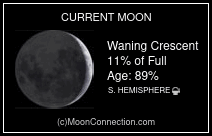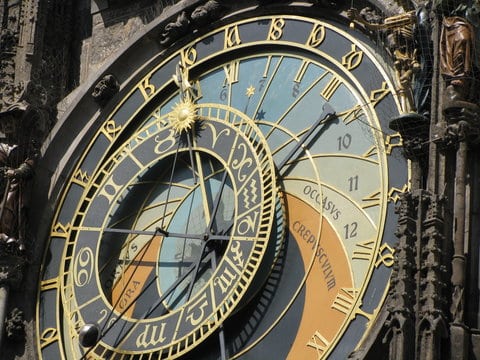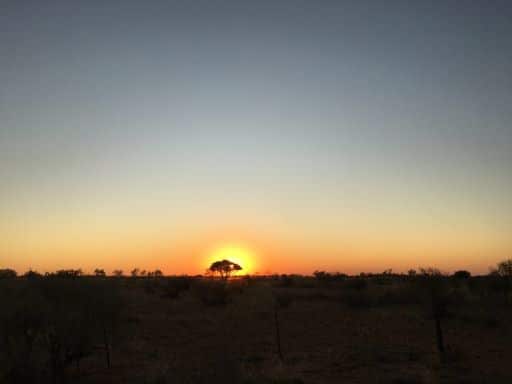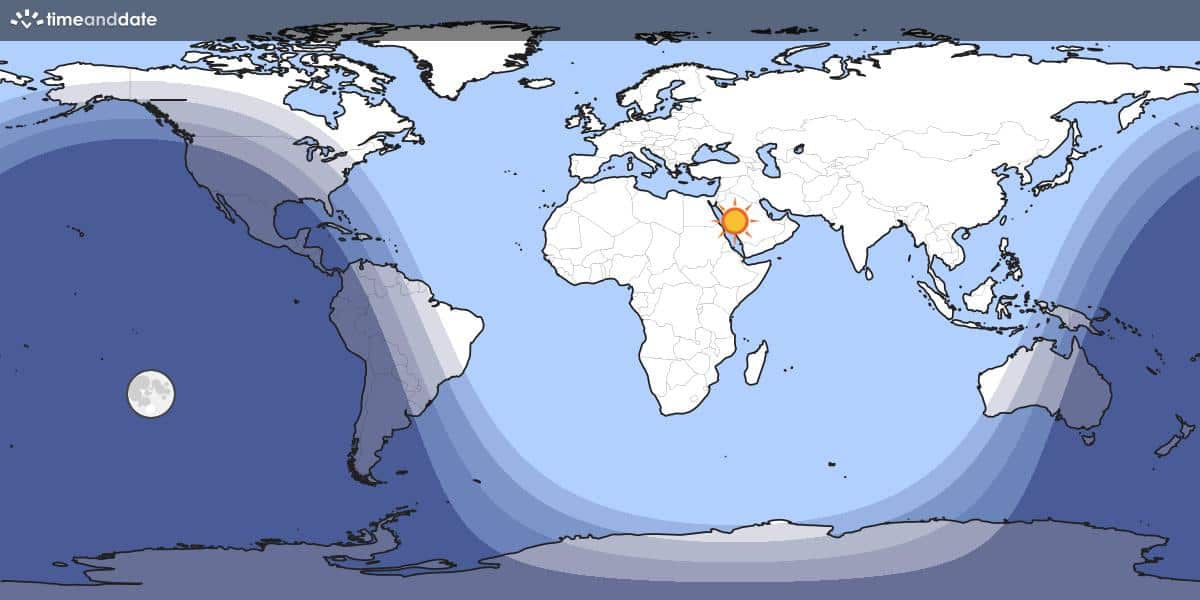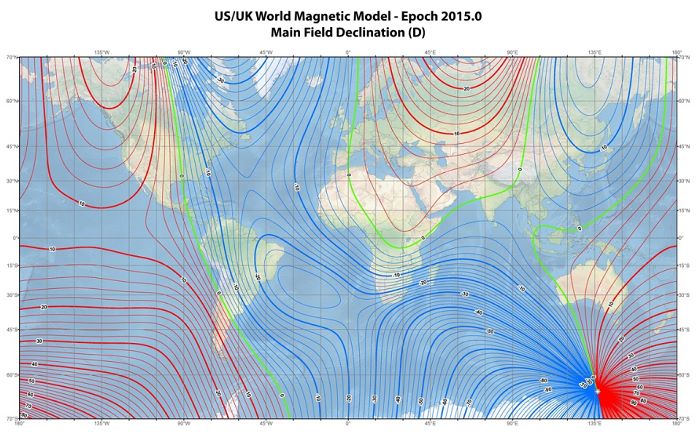Bar – Chart 10
Steve Gottlieb’s Observations
S-L 574
05 33 21 -69 57 20; Men
V = 12.8; Size 1.2′
30″ (10/14/15 – OzSky): at 394x; bright, fairly large, elongated E-W, mottled. A few stars are resolved at the edges including a mag 14 star on the west edge (a B5-type eclipsing binary). Picked up 2.3′ W of NGC 2028. I’m surprised John Herschel missed this cluster as it is nearly as obvious as NGC 2028.
30″ (10/12/15 – OzSky): S-L 574 forms the western vertex of a trio of LMC clusters with fairly similar NGC 2028 just 2.3′ E and fainter H-S 353 2.9′ NE. At 394x, it appeared bright, moderately large, slightly elongated E-W, 30″ diameter, brighter along the major axis, clumpy. A mag 14 star is at the west tip and a mag 11.9 star is 0.9′ NNW. Numerous others LMC clusters are in this very rich region including NGC 2016 9′ W and NGC 2036 9′ SE.
Notes: Shapley-Lindsay: 30″ diameter. “Irregular, unresolved”
H-S 353 = OGLE-CL LMC 591
05 33 40 -69 54 56; Dor
Size 0.5′
30″ (10/14/15 – OzSky): at 394x; northernmost of a small trio of clusters with NGC 2028 2.2′ SSE and S-L 574 2.9′ SW. Fairly faint, small, round glow, even surface brightness, 25″ diameter.
30″ (10/12/15 – OzSky): H-S 353 is the faintest of a close trio of LMC clusters with NGC 2028 2.2′ SSE and S-L 574 2.9′ SW. At 394x it appeared as a fairly faint, soft round glow, 30″ diameter.
NGC 2028 = ESO 056-152 = S-L 575 = LH 80
05 33 49 -69 57 06; Men
V = 12.9; Size 1.1′
30″ (10/14/15 – OzSky): fairly bright, moderately large, roundish, high surface brightness, mottled, a couple of stars resolved at the edges. A small partially resolved clump is just off the northeast side. NGC 2028 is in a small trio with similar S-L 574 2.4′ W and fainter H-S 353 2.2′ NNW. The cluster lies within the association LH 80, a stunningly rich region of the LMC with NGC 2016 11′ W, S-L 591 6′ NE, H-S 362 is 8′ NE, NGC 2036 8′ SE and more. A group of four mag 14 stars is 2′ E.
Notes: John Herschel discovered NGC 2028 = h2912 on 12 Nov 1836 and simply noted “very faint.” His position is an excellent match (he corrected his RA by 10 sec) with cluster S-L 575, so the identification is certain although I’m surprised he apparently missed nearby S-L 574, which is equally as prominent. He questioned if his object might be D 100. Dunlop’s description reads “a small round nebula, about 2′ north of a small star.” His position is just 2′ NW of S-L 575 and 3.4′ NE of a mag 11 star (his small star?). But D 100 is also 10′ ENE of NGC 2016, and given Dunlop’s range of positional errors, D 100 could also apply to NGC 2016. Neither Steinicke nor Glen Cozens equates D 100 with NGC 2028.
NGC 2036 = NGC 2043? = ESO 056-155 = S-L 587
05 34 32 -70 03 54; Men
V = 12.8; Size 1.5′
30″ (10/14/15 – OzSky): very bright, fairly large, irregular, mottled, brighter core, 50″ diameter. A bright, tiny knot of mag 15.5 stars is at the SE end. A couple of additional mag 16 stars are resolved near the edges. A mag 10.7 star lies 4′ NNE. NGC 2028 lies 8′ NW. BSDL 2464 = OGLE-CL LMC 611 was noticed 2.6′ NE.
Notes: John Herschel discovered NGC 2036 = h2917 on 11 Nov 1836 and recorded “vF; R; gradually brighter in the middle; 90″.” There is nothing at his position, but 1° south is the cluster S-L 587. Herschel noted to his description that there was likely an error of 1° in the polar distance and clearly this was the case. In the 1964 paper “Some NGC objects in the Large Magellanic Cloud” (IAJ, 6, 286-289), Eric Lindsay commented, “The Decl. seems to be in error. The object is probably the small cluster S/L 587 at 1° south. Herschel found strong ground to suspect an error of a degree in P.D. which should most likely be 160° and not 159°.” As this cluster is exactly 1° S of Herschel’s position, the identification is virtually certain.
See notes for NGC 2043, which may be a duplicate observation with the 48″ Great Melbourne Telescope.
S-L 591 = OGLE-CL LMC 609
05 34 51.5 -69 54 55; Men
V = 12.9; Size 0.9′
30″ (10/14/15 – OzSky): fairly bright, fairly small, roundish, 35″, mottled. Only a couple of mag 16 stars are resolved around the edges. A mag 11.8 star is 1.7′ NE. Picked up 6′ NE of NGC 2028 in a very rich region of the LMC.
Notes: Shapley-Lindsay: 25″ diameter. “Few stars, probably sparse cluster”
BSDL 2464 = OGLE-CL LMC 611
05 35 00 -70 02 34; Men
Size 0.4′
30″ (10/14/15 – OzSky): very faint, small glow, 20″ diameter. Picked up 2.7′ NE of NGC 2036 and a similar distance southeast of a mag 10.7 star. A couple of very faint stars were resolved at the east end.
H-S 362 = OGLE-CL LMC 616
05 35 13 -69 54 23; Dor
Size 0.5′
30″ (10/14/15 – OzSky): fairly faint LMC cluster, elongated NW-SE, 25″ diameter. Picked up 2′ ENE of S-L 591 and 1.7′ SE of a mag 11.9 star, the three objects forming a near equilateral triangle. NGC 2028/S-L 574 lies 8′ SW (on line with S-L 591).
NGC 2046 = ESO 056-162 = S-L 597
05 35 37.6 -70 14 27; Men
V = 12.6; Size 1.3′
24″ (4/9/08 – Magellan Observatory, Australia): this is the first in a rich field of 8 NGC clusters (with the brightest NGC 2058). At 200x, it appeared bright, fairly small, slightly elongated WSW-ENE in the direction of a mag 13 star just 0.8′ SW. The core seems offset from the center to the NE end or a compact knot of stars is attached at the following end. NGC 2047 lies 3.2′ NNE. Located 6′ SE of mag 8.2 HD 37762.
Notes: John Herschel discovered NGC 2046 = h2923 on 11 Nov 1836 and wrote, “vF; R; gradually brighter in the middle; the first of a group of six nebulae.” His position and sketch (Pl IV, fig 9) is accurate.
Using the 48″ GMT, Albert Le Sueur sketched the group on 7 Feb 1870, as well as Joseph Turner on 26 Apr 1876 and Pietro Baracchi on 18 Dec 1884. Le Sueur’s sketch was reproduced on plate IV, figure 32 and Turner’s sketch on plate IV, figure 33 in “Observations of Southern Nebulae made with the Great Melbourne Telescope 1869 – 1885.”
NGC 2047 = ESO 056-167 = S-L 600
05 35 54.4 -70 11 29; Men
V = 13.2; Size 0.9′
24″ (4/9/08 – Magellan Observatory, Australia): this LMC cluster is located on the west side of a rich field of 8 NGC clusters in the 13mm Ethos (200x). It appeared moderately bright, fairly small, round, 45″ diameter. A faint star is at the south edge. Forms a pair with slightly brighter NGC 2046 3.2′ SSW. Located 5.8′ ESE of mag 8.2 HD 37762 and 5.4′ WSW of NGC 2058.
Notes: John Herschel discovered NGC 2047 = h2925 on 11 Nov 1836 and described as “the second of a group. Pl IV, fig 9.” His position and sketch is accurate.
The entire group of clusters (NGC 2046, 2047, 2057, 2058, 2059, 2065, 2066) was sketched by Albert Le Sueur on 7 Feb 1870, as well as Joseph Turner on 26 Apr 1876 and Pietro Baracchi on 18 Dec 1884, all using the 48″ Great Melbourne Telescope. Le Sueur’s sketch is plate IV, figure 32 and Turner’s is figure 33 in “Observations of Southern Nebulae made with the Great Melbourne Telescope 1869 – 1885”. Turner sketched the cluster as very elongated N-S and Baracchi sketched it as round.
NGC 2058 = ESO 056-173 = S-L 614
05 36 54.5 -70 09 44; Men
V = 10.5; Size 1.8’x1.5′
24″ (4/9/08 – Magellan Observatory, Australia): this is the brightest cluster in a 15′ field of 8 NGC clusters including NGC 2046, 47, 57, 59, 65, 66 and 72. All 8 clusters easily fit in the field of 13mm Ethos at 200x within a 20′ circle. Using 260x, NGC 2058 appeared very bright, large, well concentrated. The outer halo extends up to 2′ diameter using averted vision. At 350x, a few very faint stars are resolved in the halo and around the edges of the core. Two mag 12.5-13 stars lie 1′ WSW and 1.5′ WNW. Other nearby clusters include NGC 2059 2′ N, NGC 2066 4.1′ E, NGC 2047 5.4′ WSW and NGC 2065 5.8′ SE. I also picked up a couple of “anonymous” clusters or HII knots. OGLE-CL LMC 632 is north of NGC 2059 and emission nebula N171B is following NGC 2072. This group of clusters is located just over 1° S of the Tarantula Nebula.
Notes: James Dunlop discovered NGC 2058 = D 103 = h2933 on 24 Sep 1826. He described (summary of two observations) “a round well-defined nebula, 30″ diameter, bright at the centre. The preceding of three nebulae forming a triangle [with NGC 2057 and NGC 2065].” He made a second observation three nights later. His reduced position was 10′ too far SE, but reference to his drift data and nearby objects confirms the identification.
On 11 Nov 1836 (sweep 748), John Herschel called this cluster, “B; R; gradually brighter in the middle; 90″; the 3rd of a group of 6.” Three sweeps later he observed the cluster again as “vB; R; the 3rd of a group of 7. Pl IV, fig 9.” His position and sketch is accurate. John Herschel equated Dunlop 102 with h2933.
The entire group of clusters (NGC 2046, 2047, 2057, 2058, 2059, 2065, 2066) was sketched by Le Sueur on 7 Feb 1870, Joseph Turner on 26 Apr 1876 and Pietro Baracchi on 18 Dec 1884 using the 48″ Great Melbourne Telescope. Le Sueur’s and Turner’s sketches were published in “Observations of Southern Nebulae made with the Great Melbourne Telescope 1869 – 1885” in plate IV, figure 32 and figure 33.
NGC 2057 = ESO 056-174 = S-L 616
05 36 56.2 -70 16 10; Men
V = 12.2; Size 1.8′
24″ (4/9/08 – Magellan Observatory, Australia): this LMC cluster is on the south side of a field filled with 8 NGC clusters. At 260x it appeared bright, fairly small, round, ~30″ diameter, fairly well concentrated with a small bright core. Situated on a line between NGC 2065 4′ NE and a mag 10.4 HD 269839 3′ SW. NGC 2046 lies 6.8′ WNW, 2047 7.0′ NW and 2058 6.4′ N.
Notes: James Dunlop discovered NGC 2057 = D 104 = h2935 on 24 Sep 1826. He described “a very small faint nebula, 8″ or 10″ diameter” and noted it was part of a triangle (with NGC 2058 and NGC 2065). Although his reduced position was 11′ too far SE reference to his handwritten sweep timings confirms the identification. He missed NGC 2057 on a sweep 3 nights later, picking up only NGC 2058 and 2065.
John Herschel independently discovered NGC 2057 on 11 Nov 1836 (sweep 748) and recorded “pF; S; R; gradually brighter in the middle; the 5th (4th properly) of a group of 6, RA only estimated from a rough diagram incorrect (as it would seem) in the order of the objects.”
Albert Le Sueur, Joseph Turner and Pietro Baracchi sketched the entire group of clusters (NGC 2046, 2047, 2057, 2058, 2059, 2065, 2066) in 1870, 1876 and 1884, respectively, using the 48″ Great Melbourne Telescope. Le Sueur’s sketch was reproduced as plate IV, figure 32 and Turner’s sketch in plate IV, figure 33 in in “Observations of Southern Nebulae made with the Great Melbourne Telescope 1869 – 1885”. Turner’s sketch shows a star or clump bulging out the southeast side, though Baracchi’s sketch shows a narrow extension to the north towards a faint star.
NGC 2059 = ESO 056-175 = S-L 613
05 37 01.5 -70 07 37; Men
V = 12.9; Size 1.1′
24″ (4/9/08 – Magellan Observatory, Australia): this LMC cluster is on the north side of a field of 8 NGC clusters. At 200x it appeared moderately bright, fairly small, round, 35″ diameter. At 350x it appeared grainy but was still unresolved except for a faint star at the north edge. Located 2.1′ NNE of NGC 2058 and just 40″ following a mag 12 star.
Notes: John Herschel discovered NGC 2059 = h2936 on 11 Nov 1836 and reported “vF; the 5th (4th in MS) of a group of 6. Pl IV, fig 9.” His position and sketch is accurate.
The Hodge-Wright Atlas misidentifies OGLE-CL LMC 632 (too far north) as NGC 2059. Interestingly, Pietro Baracchi’s sketch of the field on 18 Dec 1884 with the GMT, shows OGLE-CL LMC 632 as a nebulous object close northwest of NGC 2059, directly south of a star labeled as 15th magnitude
NGC 2065 = ESO 057-002 = S-L 626
05 37 35.9 -70 14 05; Men
V = 10.7; Size 2.4′
24″ (4/9/08 – Magellan Observatory, Australia): at 260x, this LMC cluster appeared very bright, fairly large, round, 1.2′ diameter, weak concentration. With averted vision, the surface is mottled and the outer halo increases to at least 1.5′. The cluster appeared very lively at 350x with a few stars just on the verge of resolution. At this power the halo appeared up to 1.8′ in diameter. A mag 12 star is at the NE edge and two mag 13/13.5 stars lie ~1.5′ WNW. Eight NGC clusters reside in this one field with four other clusters within 6′: NGC 2057 4′ SW, NGC 2066 4.2′ N, NGC 2072 4′ E and NGC 2058 5.8′ NW!
Notes: James Dunlop discovered NGC 2065 = D 105 = h2938 on 24 Sep 1826 and described “a round well-defined nebula, 25″ diameter.” He made a second observation 3 nights later, along with NGC 2058. Although his reduced position is 9′ too far SE, reference to his sweep timings confirms the identification on both nights.
On 11 Oct 1836, John Herschel found the cluster and reported h2938 as “pB; R; last of group of 6. Pl IV, fig 9.” Three sweeps later he noted “B; the 6th of a group of 7.” His position and sketch is accurate. He questioned if this object was D 103, though D 105 seems a better match.
NGC 2066 = ESO 057-003 = S-L 627
05 37 41.2 -70 09 58; Men
V = 13.1; Size 1.0′
24″ (4/9/08 – Magellan Observatory, Australia): at 260x appeared moderately bright and large, round, 45″ diameter, very weakly concentrated. Located on the eastern end of a rich field of 9 NGC clusters and forms the vertex of an isosceles right triangle with NGC 2065 4.2′ due south and NGC 2058 4.1′ due west.
Notes: John Herschel discovered NGC 2066 = h2939 on 12 Nov 1836 and noted “vF and S; the last of a group of 7; this nebula escaped notice sweep 748. Plate IV, fig 9.” The sketch on Plate IV accurately places the 7 clusters (flipped right-left and upside down).
The entire group of clusters (NGC 2046, 2047, 2057, 2058, 2059, 2065, 2066) was sketched by Joseph Turner on 26 Apr 1876 and Pietro Baracchi on 18 Dec 1884 using the 48″ Great Melbourne Telescope. Turner’s sketch was published in “Observations of Southern Nebulae made with the Great Melbourne Telescope 1869 – 1885” on plate IV, figure 33. Albert Le Sueur apparently missed this cluster in an earlier observation made on 7 Feb 1870.
NGC 2072 = ESO 057-004 = S-L 630
05 38 23.8 -70 14 01; Men
V = 13.2; Size 1.0′
24″ (4/10/08 – Magellan Observatory, Australia): at 260x this LMC cluster appeared moderately bright, fairly small, round, 35″-40″ diameter, weak concentration. Located 4′ E of NGC 2065 at the east end of a group of 8 NGC clusters (and a couple of fainter ones)
Notes: Pietro Baracchi discovered NGC 2072 on 20 Dec 1884 with the 48-inch Great Melbourne Telescope while observing a number of clusters near NGC 2065 in the LMC. He labeled it as “g” on his sketch of the field and called it “vvF, S, indistinct, flat.” With respect to NGC 2065, he measured an offset of 47 seconds following and 40″ N. This falls only 0.6′ NE of center of this small cluster. Dreyer credited “Melbourne Obs” in the NGC (R. L. Ellery’s “Observations of Southern Nebulae made with the [48″] Great Melbourne Telescope 1869 – 1885”). See NGC 2043, also discovered the same night.



